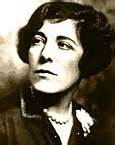 Do you like flea markets? Saturdays are often spent with my daughter, exploring them. It’s our ‘getting away from it all’ hobby.
Do you like flea markets? Saturdays are often spent with my daughter, exploring them. It’s our ‘getting away from it all’ hobby.
I look for frames (mirrors, art-work, photo frames, etc.) and spend lots of time sorting through books. And I browse. Some things just look interesting, or bring back a childhood memory (I had one of those!), or give me a laugh trying to imagine what kind of person would actually buy some of this stuff.
The frame habit is one I’m trying to break. I have more than I would ever use, and some odd ones that I haven’t figured out what was in them to begin with. So I’ve donated them to second-hand stores and am trying to refrain from purchasing more – for a while.
But, as Edward Gorey said, you can never have too many books.
I had nearly all Steven King’s works in paperback at one time, and decided a few years ago that a S.K. hardback library would be cool. If it’s under $5 and I don’t already own it, it’s mine now. Once I made a deal with another shopper at the flea market to buy the new one she was reading when she finished it!
Often I run across an odd book, or a really old book. My prized possession is a hardbound collection of short stories, Buttered Side Down by Edna Ferber, published in 1906. It still has the original paper jacket, in surprisingly good condition. I bought it at a roadside flea market for 60 cents.
As I read through Ferber’s short stories, I was stricken by how terrible they are. The writing is almost child-like, the concepts very naïve, and honestly, boring. The l anguage is stilted and ‘flowery’. The characters are one-dimensional and stereotyped. The stories are simple and predictable. Yet she was a popular writer in her time. Her works include Showboat, Cimarron, Giant, and So Big, which won a Pulitzer in 1924.
anguage is stilted and ‘flowery’. The characters are one-dimensional and stereotyped. The stories are simple and predictable. Yet she was a popular writer in her time. Her works include Showboat, Cimarron, Giant, and So Big, which won a Pulitzer in 1924.
Well, maybe this book is NOT an example of her finest work. When I looked up her bio, I found it was her second publication – an early effort (she was 20). Maybe it’s an example of what people considered good work in the early 1900’s. After all, our tastes, our social mores, and our speech have changed considerably over the years. When you look at many classics, the writing and language used in most of them is stiff and outdated, yet we retain an appreciation for their value in the era in which they were written.
Reading Buttered Side Down gave me insight into why we should never stop learning and improving our craft. After all, Ferber’s talent was recognized in her later work. Provided that we still have books, what will the future bring? Are there any current authors whose writing will stand up to future critics? What current works will be tomorrow’s classics?








Sandra, that Byron book sounds like a real treasure!
One of the reasons I love your blog so much is that I can identify with your writings. I too, collect frames, prints and books. My best find to date is a leather bound copy of a 1916 book on Lord Byron. Keep up the good and interesting work!!
Thanks, all!
I love flea markets and sometimes browse just to relax and I’m also always on the look out for good books. As far as writing styles, I think they’ve evolved over the years and become less formal as have our modern dress, manners and way of communicating. For me, considering the period stories and books were written is part of enjoying literature. Good post.
I love flea markets and always buy old books too:))
I too wonder if there are writers today that will last like Jane Austin, Salinger and others. I read Showboat and Giant years ago and did not find your observations to be true about her novels. Of course I was not a critical reader back then. Ferber was writing in early 20th Century and dealing with prejudice, status of women, and other social issues.
I have not read those works, Dot. Maybe I was right – this was an early effort. Still, glad to have it. Thanks for the comments.